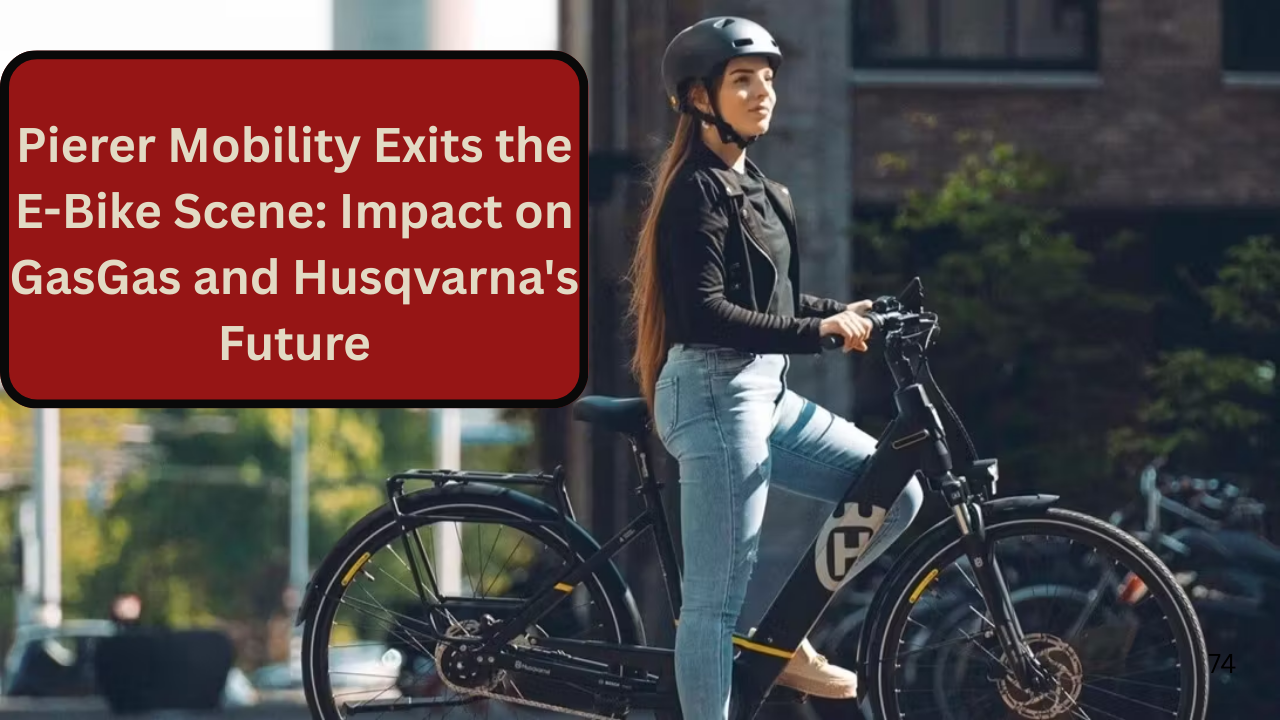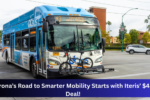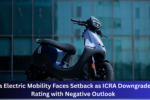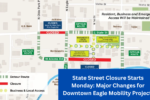Pierer Mobility has announced its decision to exit the e-bike and bicycle business by the end of its 2025 fiscal year. The company, which is well-known for its involvement with brands like Husqvarna, GasGas, and Felt, will begin selling its remaining inventory of bicycles and e-bikes.
This decision marks a pivotal moment for Pierer Mobility, which is currently navigating through difficult financial challenges. The company also revealed that it will evaluate potential strategic options for its 70% stake in the Felt bicycle brand, which is managed separately from its core business.
This move follows a year of deep losses for Pierer Mobility, particularly within its motorcycle division. Although the company has resumed motorcycle production, it is still restructuring its operations to address these losses and regain financial stability. In this article, we will explore why Pierer Mobility made this decision, the impact on its business, and what this shift means for the company’s future.
Why Pierer Mobility Is Exiting the E-Bike Market
Pierer Mobility’s decision to exit the e-bike and bicycle market was primarily driven by financial struggles. The company reported a significant decline in sales and faced increased competition within the e-bike segment.
In the company’s preliminary fiscal report for 2024, Pierer revealed that it sold 106,311 e-bikes and bicycles in the past year, a sharp decrease from 155,859 units sold in the previous year. This drop was largely attributed to the underperformance of the R Raymon e-bike brand, which Pierer has since consolidated into its global e-bike operations based in California and Austria.
The decline in sales and the consolidation of its e-bike operations reflect Pierer Mobility’s need to reassess its business strategy in light of the broader market challenges. The company has announced that it will be focusing its efforts on restructuring its core operations and exploring more profitable ventures. With the exit from the e-bike and bicycle market, Pierer Mobility aims to refocus on its primary business—motorcycles—where it has a more established presence and greater potential for recovery.
Financial Struggles and Restructuring Plans
Pierer Mobility’s troubles go beyond the e-bike sector. The company’s motorcycle division suffered significant losses in the past year, further exacerbating the financial challenges facing the business. Despite resuming motorcycle production, Pierer is still in the process of restructuring its operations, which includes cutting costs, optimizing manufacturing processes, and finding new ways to stay competitive in the increasingly saturated motorcycle market.
To support its restructuring efforts, Pierer Mobility is currently negotiating with equity and debt investors to secure financing totaling around 600 million euros (approximately $678 million). These negotiations are in the final stages, and the company is optimistic that the funds will provide the necessary resources to execute its plans effectively. However, the financial losses sustained over the past year and the restructuring efforts required to turn the company around have led to the decision to exit the e-bike market.
Sales Decline and Market Shifts
Pierer Mobility’s sales figures for 2024 indicate a notable shift in market dynamics. While the company sold 106,311 bicycles and e-bikes in 2024, it was a considerable drop from the previous year’s sales figures of 155,859. The company specifically highlighted the poor performance of the R Raymon e-bike brand as a major contributor to this decline. In response to this, Pierer decided to consolidate its e-bike operations and close regional offices in favor of centralizing its efforts in California and Austria.
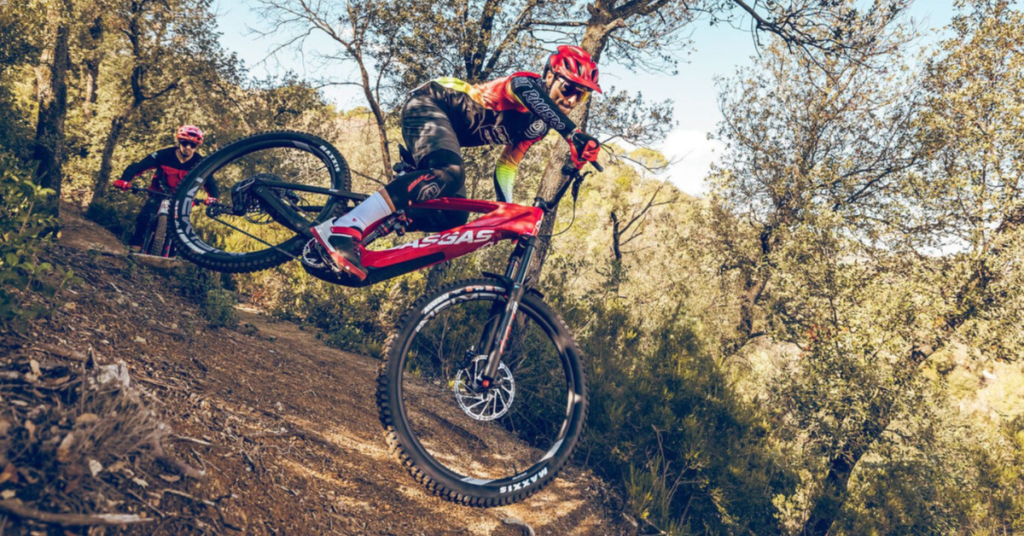
The decline in sales also reflects broader trends within the e-bike and bicycle markets. As competition grows and consumer demand shifts, companies like Pierer Mobility face increased pressure to adapt. The company’s move to exit the bicycle market entirely is a direct result of these market pressures and its need to refocus its resources on more profitable areas of business.
Impact on Husqvarna, GasGas, and Felt
As part of its exit strategy, Pierer Mobility has announced that it will sell off its remaining inventory of Husqvarna and GasGas bikes. These brands, which have historically been a part of Pierer Mobility’s diverse portfolio, will no longer be a focal point of the company’s operations moving forward. This move is expected to significantly reduce the company’s involvement in the bicycle and e-bike sectors.
Additionally, Pierer Mobility has indicated that it will explore strategic options for its 70% stake in the Felt bicycle brand. Felt, which operates as a separate entity, is a well-known name in the cycling world. While Pierer has not disclosed specific details about the potential sale or restructuring of its stake in Felt, it is clear that the company is looking to divest from its non-core bicycle and e-bike operations.
Financial Losses and the Path Forward
Pierer Mobility’s preliminary report for 2024 reveals a staggering loss of 1.888 billion euros, and the company is bracing for further losses in 2025. This financial setback has prompted the company to reevaluate its position in the market and make bold decisions regarding its future. The exit from the e-bike and bicycle market is part of a broader effort to regain stability and focus on more profitable business lines.
Despite the financial setbacks, Pierer Mobility is optimistic about its future prospects. The company’s leadership believes that the restructuring efforts, supported by the planned financing, will enable it to return to a profitable position in the coming years. Pierer’s commitment to the motorcycle industry remains strong, and the company hopes that this refocused approach will help it navigate the challenges of the evolving global mobility market.
What This Means for the Industry
Pierer Mobility’s decision to exit the e-bike and bicycle market signals a broader shift in the industry. As companies face increased competition and market saturation, many are being forced to rethink their strategies and adapt to changing consumer preferences. Pierer Mobility’s move may inspire other companies to reassess their positions in the e-bike market and explore new ways to remain competitive.
Additionally, the move could have implications for the future of the bicycle and e-bike market as a whole. As Pierer divests from these sectors, it leaves room for other companies to step in and fill the gap. This could lead to further consolidation within the industry, as larger players focus on strengthening their core businesses while smaller companies seek to capture market share.
Conclusion
Pierer Mobility’s decision to exit the e-bike and bicycle business represents a significant turning point for the company. Facing substantial financial losses and market challenges, Pierer is choosing to shift its focus back to its motorcycle division, where it sees greater potential for recovery. While the company’s exit from the bicycle market will impact its Husqvarna, GasGas, and Felt brands, it is clear that Pierer is strategically positioning itself for the future.
As the company continues to finalize its restructuring plans and secure the necessary financing, all eyes will be on Pierer Mobility to see how it navigates this challenging period and emerges in the coming years. The future of the e-bike and bicycle market remains uncertain, but Pierer’s decision to exit is a bold move that reflects the shifting dynamics of the global mobility landscape.

Deepak Grover is a dedicated content writer at OTE News, specializing in government affairs, public policy, and current events. With a keen eye for detail and a passion for factual reporting, he ensures readers receive accurate and insightful news. Deepak holds a degree in Political Science and has experience in research-driven journalism.
When not writing, he enjoys reading historical books, exploring hiking trails, and staying updated with global political trends. His commitment to ethical journalism makes him a trusted voice at OTE News.

